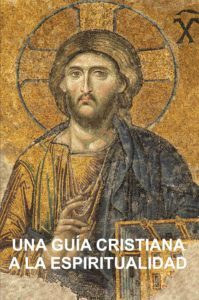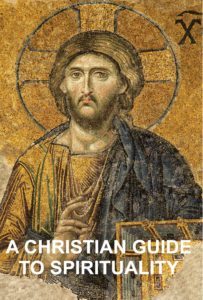Stephen W. Hiemstra's Blog, page 122
April 12, 2021
Attitude in Prayer: Monday Monologues (podcast) April 12, 2021

By Stephen W. Hiemstra
This morning I will share a prayer and reflect on Attitude in Prayer. After listening, please click here to take a brief listener survey (10 questions).
To listen, click on this link.
Hear the words; Walk the steps; Experience the joy!
Attitude in Prayer: Monday Monologues (podcast) April 12, 2021
Also see:
Monday Monologue On March 26, 2018
Other ways to engage online:
Author site: http://www.StephenWHiemstra.net,
Publisher site: http://www.T2Pneuma.com.
Newsletter: http://bit.ly/HailMary21
The post Attitude in Prayer: Monday Monologues (podcast) April 12, 2021 appeared first on T2Pneuma.net.
April 11, 2021
Prayer Day 21
By Stephen W. Hiemstra
Almighty God, beloved Son, Holy Spirit.
Thank you for allowing us to enter into your presence to pray and for being present in our daily lives.
Illuminate our minds; consecrate our hearts.
Help us to be fully present with each other and with you in prayer.
In Jesus’ name, Amen.
Prayer Day 21
Also see:
Believer’s Prayer
Other ways to engage online:
Author site: http://www.StephenWHiemstra.net
Purchase Book: http://www.T2Pneuma.com
Newsletter: http://bit.ly/HailMary21
The post Prayer Day 21 appeared first on T2Pneuma.net.
Oración Dia 21
Por Stephen W. Hiemstra
Dios Todopoderoso, Hijo amado, Espíritu Santo.
Gracias por permitirnos entrar en tu presencia para orar y por estar presente en nuestras vidas cotidianas.
Ilumina nuestras mentes y consagra nuestros corazones.
Ayudanos a estar completamente presentes con los demás y contigo en oración.
En el nombre de Jesús oramos, Amén.
Oración Dia 21
Ver también:
Prefacio de La Guía Cristiana a la Espiritualidad
Otras formas de participar en línea:
Sitio del autor: http://www.StephenWHiemstra.net
Comprar Libro: http://www.T2Pneuma.com
Boletín informativo: http://bit.ly/HailMary21
The post Oración Dia 21 appeared first on T2Pneuma.net.
Gebetstag 21
Von Stephen W. Hiemstra
Allmächtiger Gott, Geliebter Sohn, Heiliger Geist.
Danke dich dass wir in deine Gegenwart eintreten dürfen, um zu beten und in unserem täglichen Leben präsent zu sein.
Erleuchte unseren Geist; weihe unsere Herzen.
Hilf uns miteinander und mit dir im Gebet vollständig präsent zu sein.
In Jesu Namen, Amen.
Gebetstag 21
Siehe auch:
Einleitung auf Ein Christlicher Leitfaden zur Spiritualität
Andere Möglichkeiten, sich online zu engagieren:
Autoren Seite: http://www.StephenWHiemstra.net
Herausgeber Seite: http://www.T2Pneuma.com
Mitteilungsblatt: http://bit.ly/HailMary21
The post Gebetstag 21 appeared first on T2Pneuma.net.
April 9, 2021
What is Your Attitude in Prayer?
“And he said, Abba, Father, all things are possible for you. Remove this cup from me. Yet not what I will, but what you will.” (Mark 14:36)
By Stephen W. Hiemstra
The Lord’s Prayer radically changed the disciples’ attitudes about prayer.
To understand how much attitudes had to change, think about how a first century Jew would view Jesus’ prayer. In the Lord’s Prayer, we, metaphorically, enter the city of Jerusalem; go through ritual purification to the outer courts of the temple, step into the Holy place, and pull back the veil of the Holy of Holies. Then, at the mercy seat of the Ark of the Covenant, we put on the ephod [1] of the high priest and begin to pray, not to YHWH, but to Daddy! Talk about radical!
If this metaphor for prayer seems far-fetched, consider Paul’s last trip to Jerusalem. Paul arrived in the city in the company of fellow believers (gentiles), probably Greeks from Corinth (1 Cor 16:3). When he entered the temple a riot broke out as Jews who had seen him in the city accused Paul of bringing a gentile into the temple. Paul escaped with his life from this riot only because the Roman guards rescued him (Acts 21:26-32). This story underscores the point that it was unthinkable, to a Jew, that anyone could enter God’s presence—especially in the Temple—without proper cleansing, preparation, and authority.
What is your attitude in prayer? Are you reverent or cavalier in approaching God? Although the temple veil was torn when Christ died on the cross [2], God is still holy and we can approach the mercy seat only by the invitation of Christ. Respecting God’s boundaries is an important step in approaching prayer. “Be holy because I am holy” (Lev 11:44) says the Lord God.
[1] A ceremonial garment worn by the high priest described in Exod 28.
[2] The splitting of the temple veil is recorded in all three of the synoptic Gospels (Matt 27:51; Mark 15:38; and Luke 23:45). Roman armies destroyed the temple during a Jewish uprising in AD 70.
What is Your Attitude in Prayer?
Also see:
Preface to A Christian Guide to Spirituality
Other ways to engage online:
Author site: http://www.StephenWHiemstra.net
Purchase Book: http://www.T2Pneuma.com
Newsletter: http://bit.ly/HailMary21
The post What is Your Attitude in Prayer? appeared first on T2Pneuma.net.
Cuál es Tu Actitud en Oración?
“Y decía: ¡Abba, Padre! Para ti todas las cosas son posibles; aparta de mí esta copa, pero no sea lo que yo quiero, sino lo que tú quieras.” (Mark 14:36 LBA)
Por Stephen W. Hiemstra
El Padre Nuestro cambió radicalmente la actitud de los discípulos sobre oración.
Para entender lo mucho que tuvieron que cambiar las actitudes, piense sobre un Judío del siglo uno y cómo vería la oración de Jesús. En El Padre Nuestro, entramos metafóricamente la ciudad de Jerusalén; pasar entre purificación ritual a los patios exteriores del templo, el paso hacia el lugar santo, y tire hacia atrás el velo del Santo de los Santos. Luego, en el propiciatorio del el Arca del Testimonio, que ponemos en el efod [1], del Sumo Sacerdote y inicia a orar, no a YHWH, sino a papá! Simplemente radical!
Si esta metafórica para oración parece descabellada, considera la viaje última de Pablo a Jerusalén. Pablo llegó en la ciudad en la compañía de otras creyentes (gentiles) probablemente Griegos de Corinto (1 Cor 16:3). Cuando él entró el templo, el empiezo un antidisturbio como unos Judíos quien lo han visto en la ciudad acusó que traer un gentil hacia el templo. Pablo escapó de esta lucha con su vida solamente porque la guardia Romana se lo rescataron (Acts 21:26-32). Esta historia subrayo la punta que era impensable a un Judío que cualquiera persona podría entrar la presencia de Dios—sobre todo en el templo—sino limpieza apropiada, la preparación, y la autoridad.
¿Cuál es tu actitud en oración? ¿Eres reverente o desdeñoso en acercando a Dios? Aunque el vel del templo se rasgó cuando Cristo murió en la cruz [2], Dios es todavía santo y nosotros podamos acercar al propiciatorio sólo por la invitación de Cristo. Al respectando las limitaciones de Dios es un etapa importante en acercando oración. “sean santos, porque Yo soy santo” (Lev 11:44 NBH) dice el Señor Todopoderoso.
[1] Unas prendas ceremoniales usadas por el sumo sacerdote describo en Éxodo 28.
[2] La división del velo del templo se registra en los tres evangélicos sinópticos (Matt 27:51, Mark 15:38 y Luke 23:45). Ejércitos romanos destruyeron el templo durante una revuelta judía en el año 70.
Cuál es Tu Actitud en Oración?
Ver también:
Prefacio de La Guía Cristiana a la Espiritualidad
Otras formas de participar en línea:
Sitio del autor: http://www.StephenWHiemstra.net
Comprar Libro: http://www.T2Pneuma.com
Boletín informativo: http://bit.ly/HailMary21
The post Cuál es Tu Actitud en Oración? appeared first on T2Pneuma.net.
Was ist Deine Einstellung zum Gebet?
Von Stephen W. Hiemstra
“und sprach: Abba, Vater, alles ist dir möglich; nimm diesen Kelch von mir;
doch nicht, was ich will, sondern was du willst!” (Mark 14:36)
Das Beten des Herren veränderte die Einstellung der Jünger zum Gebet radikal. Um zu verstehen, wie sehr sich die Einstellungen ändern mussten, denken Sie darüber nach, wie ein Jude des ersten Jahrhunderts das Gebet Jesu sehen würde. Im Beten des Herren betreten wir metaphorisch die Stadt Jerusalem, gehen durch rituelle Reinigung zu den Außenhöfen des Tempels, betreten den heiligen Ort, und ziehen den Schleier des Allerheiligsten zurück. Dann setzen wir vor dem Gnadenstuhl der Bundeslade das Ephod des Hohepriesters (Exod 28) auf und beginnen zu beten, nicht zu JHWH, sondern zu Papa! Spreche über Radikal!
Wenn diese Metapher für das Gebet weit hergeholt scheint, denke die letzte Reise Paulus nach Jerusalem. Paulus kam in die Stadt in Begleitung von Glaubensgenossen (Heiden oder Nichtjuden), wahrscheinlich Griechen aus Korinth (1 Cor 16:3). Als er den Tempel betrat, kam es zu einem Aufstand, als Juden, die ihn in der Stadt gesehen hatten, Paulus beschuldigten, einen Nichtjuden in den Tempel gebracht zu haben. Paulus entkam mit seinem Leben diesem Aufstand nur, weil die römischen Wachen ihn retteten (Acts 21:26-32). Diese Geschichte unterstreicht den Punkt, dass es für einen Juden undenkbar war, dass jeder in Gottes Gegenwart eintreten konnte—besonders im Tempel—ohne angemessene Reinigung, Vorbereitung und Autorität.
Was ist deine Einstellung zum Gebet? Bist Du ehrfürchtig oder kavalieris, wenn Du sich Gott nähern? Obwohl der Tempelschleier zerrissen wurde, als Christus am Kreuz starb, ist Gott immer noch heilig und wir können uns dem Gnadenstuhl nur auf Einladung Christi nähern. Das Respektieren der Grenzen Gottes ist ein wichtiger Schritt, um sich dem Gebet zu nähern. “Sei heilig, weil ich heilig bin“ (Lev 11:44) sagt der Herr, Gott.
Was ist Deine Einstellung zum Gebet?
Siehe auch:
Einleitung auf Ein Christlicher Leitfaden zur Spiritualität
Andere Möglichkeiten, sich online zu engagieren:
Autoren Seite: http://www.StephenWHiemstra.net
Herausgeber Seite: http://www.T2Pneuma.com
Mitteilungsblatt: http://bit.ly/HailMary21
The post Was ist Deine Einstellung zum Gebet? appeared first on T2Pneuma.net.
April 6, 2021
McKnight: 1 Peter Explained
 Scott McKnight. 1996. The NIV Application Commentary: 1 Peter. Grand Rapids: Zondervan.
Scott McKnight. 1996. The NIV Application Commentary: 1 Peter. Grand Rapids: Zondervan.
Review by Stephen W. Hiemstra
The NIV Application Commentary has been my default commentary over the past several years because the series takes the narrative of scripture seriously. Once I am acquainted with an orthodox interpretation, I can judge a book from other dimensions. I have taught from the series the Books of Romans, Luke, Genesis, Revelations, John, Matthew, Galatians, and 1 Corinthians (I may have forgotten some books). The series takes seriously John Stott’s division of the homiletical task into 3 things: the author’s context (original meaning), the reader’s context (contemporary significance), and the need to bridge the two (bridging contexts) [1]. This background in the series led me to consider Scott McKnight’s commentary on 1 Peter.
McKnight sets out the goal of “to study 1 Peter in such a way as to highlight Peter’s proposals for Christian life in a modern society” (22). In his overview, he breaks Peter’s message into three points: salvation, the church, and Christian life. Peter describes salvation through Christ’s suffering (1 Peter 2:24). The church is pictured as the family of God. In the Christian life, Peter exhorts his readers to practice hope, holiness, fear before God, love, and growth (32). What caught my eye was McKnight’s observation that 1 Peter is the most popular NT book among Christians living with social marginalization and suffering outside the Western context (35). That would include many Hispanic and Middle Eastern people that I know.
Suffering. It is my own observation that the suffering in my own life–a wife with cancer, a child on dialysis, and a younger sister who died suddenly–has enabled me to witness more effectively to those around me. In like manner, we are drawn to the cross of Christ. “He himself bore our sins in his body on the tree, so that we might die to sins and live for righteousness; by his wounds you have been healed” (1 Peter 2:24). McKnight’s rendering of 1 Peter and his focus on the role of suffering convinced me that I need to spend more time with this book.
McKnight spends a fair amount of time trying to unpack the social position of Peter’s audience. He views 1 Peter 2:11-12 as a pivotal passage. Are his readers “aliens and strangers”? Is the pursuit of holiness especially important because of their low social standing? If they were literally aliens and strangers—the illegal immigrants of their day—how do we, who are not, read this book? Interesting questions. In the new, downwardly-mobile, post-Christian context in which most Americans live today, 1 Peter becomes more relevant with each passing day.
Among the NIV commentaries in this series, the McKnight commentary on 1 Peter is a gem. He struggles with interesting questions. His reading of 1 Peter is both balanced and insightful. After reading about Peter’s response to suffering, McKnight convinced me to look also at Paul’s treatment of suffering in 2 Corinthians—a study that I have taken up this summer.
Footnotes[1] See: John Stott. 1982. Between Two Worlds: The Challenge of Preaching Today. Grand Rapids: Eerdmans.
McKnight: 1 Peter ExplainedAlso See:Nouwen: Make Space for Self, Others, and God Books, Films, and MinistryOther ways to engage online:Author site: http://www.StephenWHiemstra.netPublisher site: http://www.T2Pneuma.com Newsletter: http://bit.ly/HailMary21
The post McKnight: 1 Peter Explained appeared first on T2Pneuma.net.
April 5, 2021
Everlasting Life: Monday Monologues (podcast) April 5, 2021

By Stephen W. Hiemstra
This morning I will share a prayer and reflect on Everlasting Life. After listening, please click here to take a brief listener survey (10 questions).
To listen, click on this link.
Hear the words; Walk the steps; Experience the joy!
Everlasting Life: Monday Monologues (podcast) April 5, 2021
Also see:
Monday Monologue On March 26, 2018
Other ways to engage online:
Author site: http://www.StephenWHiemstra.net,
Publisher site: http://www.T2Pneuma.com.
Newsletter: http://bit.ly/HailMary21
The post Everlasting Life: Monday Monologues (podcast) April 5, 2021 appeared first on T2Pneuma.net.
April 4, 2021
Mark 16: Easter
 “And he said to them, Do not be alarmed. You seek Jesus of Nazareth, who was crucified.
“And he said to them, Do not be alarmed. You seek Jesus of Nazareth, who was crucified.
He has risen; he is not here. See the place where they laid him” (Mark 16:6 ESV).
By Stephen W. Hiemstra
One of the most vivid memories I have as a young person was the experience of an Easter sunrise. Easter is mysterious, earth-shattering news. How could I sleep through it?
FuneralAt my grandfather’s funeral, I was given a head of wheat which hangs now in my kitchen. The wheat reminds me of Jesus’ saying: “Truly, truly, I say to you, unless a grain of wheat falls into the earth and dies, it remains alone; but if it dies, it bears much fruit” (John 12:24 ESV).
Resurrection RemindersThe mystery of resurrection is everywhere in nature. Sunrise is the resurrection of the day. Springtime is the resurrection of the seasons. The metamorphosis from caterpillar to cocoon to adult butterfly is a beautiful, dramatic resurrection. The Apostle Paul writes: “all of creation groans in anticipation of our redemption” (Romans 8:19-23).
Messianic PropheciesProphesies of Jesus’ resurrection start early in scripture. Systematic theologians see salvation history as creation, fall, and redemption. Because sin is the cause of death, eternal life requires forgiveness of sin which is brought about in Christ’s resurrection. This transition is prophesied in Genesis: “I will put enmity between you and the woman, and between your offspring and her offspring; he shall bruise your head, and you shall bruise his heel” (Gen 3:15 ESV).
Other theologians see resurrection arising out of righteous suffering. The prophet Job writes not only of Christ, but his own resurrection: “For I know that my Redeemer lives, and at the last he will stand upon the earth. And after my skin has been thus destroyed, yet in my flesh I shall see God, whom I shall see for myself, and my eyes shall behold, and not another” (Job 19:25-27 ESV). At the birth of the church on Pentecost (Acts 2:27), the Apostle Peter sees resurrection prophesied by King David: “For you will not abandon my soul to Sheol, or let your holy one see corruption” (Psalm 16:10).
When asked to produce a sign Jesus himself spoke of the sign of Jonah (Luke 11:29-32). In the belly of the whale Jonah prayed: “I called out to the LORD, out of my distress, and he answered me; out of the belly of Sheol I cried, and you heard my voice” (Jonah 2:2 ESV). And the whale spit him out on dry land, another resurrection story.
Old Testament Resurrections AccountsResurrection did not start with Jesus. Some see the story of the binding of Isaac as a resurrection account and a prophecy of the cross (Genesis 22:1-18). The prophet Elisha raises the Shunammite’s son from the dead (2 Kings 4:32-37). In the valley of bones, Ezekiel prophesied about resurrection of the Nation of Israel (Ezekiel 37:3-6). The exodus of the nation of Israel from Egypt and the return of the exiles from Babylon are both resurrection accounts where a dead nation rises to new life.
New Testament Resurrection AccountsIn the gospels, Jesus himself performed several resurrections. He raised Jairus’s daughter from the dead (Mark 5:22-43). He raised the widow’s son (Luke 7:12-17). Most remarkably, after lying four days in the tomb he raised Lazarus from death (John 11:1-45). Like other resurrections, Jesus’ healings and exorcisms brought hope where there was none.
Some scholars believe that John Mark’s gospel recorded Apostle Peter’s testimony while he was in Rome during AD 41-54. Mark later traveled with Paul. Mark’s role was to teach about the life of Jesus. Later, Luke may have assumed this role in Paul’s missionary team.
Mark’s Unusual EndingInterestingly, Mark did no see the gospel ending with Jesus. Neither did Luke whose gospel was followed by the Book of Acts. Mark’s gospel starts with: “The beginning of the gospel of Jesus Christ, the Son of God” (Mark 1:1 ESV). Scholars believe that Mark’s gospel ends with the woman going out from the tomb to relay the angel’s message: “But go, tell his disciples and Peter that he is going before you to Galilee” (Mark 16:7 ESV). Likewise, our part in salvation history is to pass on the story. As the hymnist Katherine Hankey (1834-1911) writes: “I love to tell the story, of unseen things above, of Jesus and his glory, of Jesus and his love…” [2]
Christian HopeChristian hope starts with the resurrection: we know that death is not the end of life’s story. And because we know the rest of the story, we can invest in life and live each day with boldness and joy
FootnotesDid Abraham believe God would raise Isaac from the dead? Why did the angel have to tell Abraham twice?
[2] www.hymnsite.com/lyrics/umh156.sht
Mark 16: EasterAlso see:A Roadmap of Simple FaithChristian Spirituality Looking Back A Place for Authoritative Prayer Other ways to engage online:Author site: http://www.StephenWHiemstra.net, Publisher site: http://www.T2Pneuma.com. Newsletter: http://bit.ly/HailMary21The post Mark 16: Easter appeared first on T2Pneuma.net.







